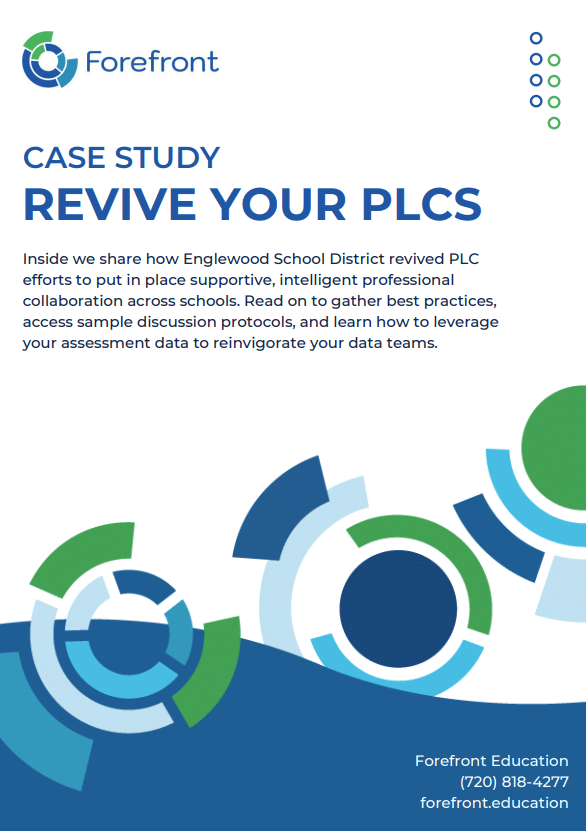The Cost of Digital Assessments
- August 18, 2023
- Blog
Long before the pandemic, digital programs were becoming ubiquitous. With COVID, the frequency and adoption of digital curricula accelerated, and print-only programs began to offer more digital components. One feature publishers commonly provide is online assessments. The benefits are obvious: teachers save time grading student responses, and then have assessment data at their fingertips, often with built-in reporting capabilities.
But, beyond the dollar signs, there are costs to these digital assessments.
Validity
The data that is the most visible is not necessarily the most valid, particularly for young learners in kindergarten through second grade classrooms. Computer-based, adaptive testing with early elementary students can be an easy way to collect student performance data, but these learners are often not ready to perform well on these assessments. Interacting with a screen rather than a teacher or with paper, pencil, and manipulatives impacts student performance due to:
- Inattention or inability to focus on tasks administered digitally.
- Developing computer literacy and typing skills.
- The relatively limited type of tasks that can be administered successfully online.
Many skills and concepts can be assessed using digital format. (e.g. number word sequences, one to one correspondence, numeral reading, etc.) However, student thinking is not visible nor heard in digital testing and performance is reduced to right/wrong. For this reason, digital assessment is perhaps helpful when the end answer is more important than the process.
As a result, the picture of student performance that results from digital tests is limited. Teachers can identify students who are not proficient, but not understand why. They might learn about a student’s overall computational accuracy or reading comprehension, but less about reasoning, problem-solving, communication, and retelling skills. And lastly, how these results triangulate with other assessment systems will often depend more on the similarity of the testing format than the student’s true proficiency level.
Time
There are many purposes of assessment. Assessments can:
- Provide formative information to guide instructional decisions;
- Provide feedback to the student to help further their own learning;
- Be used for grading and to communicate with parents;
- Give information for teams to feed their collaborative work;
- Ensure that groupings and curricula are serving the student as well as possible;
- Serve as accountability measures to determine the effectiveness of teachers, schools, and districts; and
- Inform funding and human resource decisions across a district.
At Forefront Education, we believe that the most important purpose of assessment is formative, to provide teachers with feedback about how students are responding to classroom instruction. Are students learning the content shared during classroom instruction? If not, where are the areas that need whole class reteaching? Which students need enrichment and extension? And for those that are struggling: what are the specific skill areas to target for intervention?
If these formative purposes for assessment are important to you too, and you believe assessment should foremost provide helpful information to teachers to help them guide their instruction, then devoting significant classroom time, professional learning, and collaborative work time to assessments that do not provide meaningful information to teachers wastes precious time.
Lost Information
There is a paradox here. Digital assessments make student learning as measured by these assessments more visible. Reports are accessible, easier to manipulate than a spreadsheet, and results are often aggregated and shared across schools. However, although the results from these assessments are amplified, information about student thinking is lost in the process.
In an attempt to make data collection more efficient, the most valuable information teachers gather in the assessment process gets lost. In an attempt to make assessment more reliable and efficient, validity has been sacrificed. Yes, a student missed a problem, but why? Did a student miss a question because s/he didn’t know a word or could not read the word? Was there a key conceptual misunderstanding, or did the student make a calculation error? Computer-adaptive tests report well on overall student performance, especially groups of students. But they tend to represent student learning in a binary world: yes/no, true/false, or right/wrong. The rich information necessary to efficiently guide instruction and the evidence of student thinking is mostly lost.
Conclusion
At Forefront, we believe classroom assessments, the assessments directly aligned with daily instruction, provide critical information and should be at the center of schools’ initiatives. Forefront empowers teachers with tools to quickly and easily collect results from teacher-scored, performance, interview, and observational assessments and put them into the big picture. This enables leaders and specialists to get the information they need, while ensuring that teachers are still using high-quality assessments aligned with daily instruction.
About Forefront
Forefront, an assessment data solution, helps schools collect and import assessment data. Forefront makes it easy to interpret assessment results alongside evidence of learning directly from classrooms. With Forefront, educators gain specificity and clarity about how students are performing, where they need support, and gather timely information on learning changes over time. While we also help schools ingest data from computer-based, adaptive, and standardized assessments, our primary focus are the types of assessments typically not visible in data warehouses and other assessment visualization programs: the pencil and paper, curriculum-embedded assessments used in classrooms. Our data collection tools, classroom and student-level reports, and our reporting suite are built around making data in these assessments visible, visual, and actionable.
Want to learn more about Forefront? Check out a quick, 3-minute demo today or connect with us to take a guided tour of our software solution and discuss your needs around assessment data.
About us and this blog
Our team and tools help schools implement standards-based grading, streamline assessment systems, and use meaningful data to drive decision-making.
Free PLC Case Study
Learn about how Forefront client Englewood School District put in place supportive, intelligent professional collaboration across schools. Download your free copy today to access best practices, view sample discussion protocols, and learn how to leverage your assessment data to reinvigorate your data teams.

More from our blog
See all postsForefront is the only assessment data solution optimized for classroom assessment results, leveraging these results to fuel instruction, PLCs, and grading. Elevate meaningful assessment data district-wide to transform how you understand and communicate about student learning across your schools.
Copyright © 2025 Forefront Education, Inc. All Rights Reserved.








